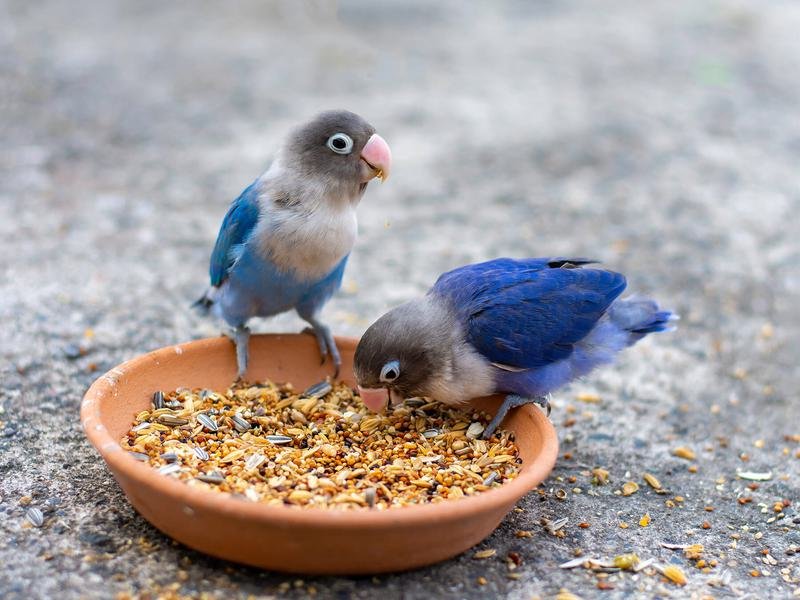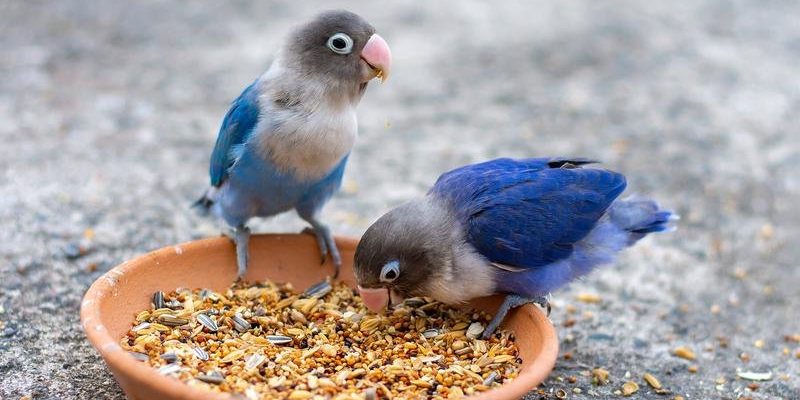
Why Nutrition Matters for Breeding Lovebirds
Here’s the thing: breeding isn’t just about the act of mating; it’s about creating healthy offspring. For lovebirds, this means that their diet plays a vital role in ensuring that the process goes smoothly. A balanced diet helps not only in producing eggs but also in nourishing those eggs to develop strong, vibrant chicks.
When a female lovebird lays eggs, her body needs more energy and nutrients than usual. Think of it like baking a cake: if you miss an ingredient, your cake might not turn out as planned. For lovebirds, missing vital nutrients can lead to weak eggs or even complications in laying them, which can be stressful for both the birds and their owners.
A good diet can make the difference between a healthy clutch of eggs and a disappointing breeding season. So, understanding their nutritional needs is crucial for any lovebird enthusiast.
Essential Nutrients for Breeding Lovebirds
Just like you wouldn’t fuel up on junk food before a marathon, lovebirds can’t thrive on just seeds alone during breeding. They need a varied diet rich in essential nutrients. Here are some of the key components to incorporate:
- Protein: Vital for egg production and overall health. Consider offering high-protein foods like boiled eggs, cooked lentils, and chickpeas.
- Vitamins: Vitamins A and D3 are particularly important. Dark leafy greens like spinach and kale provide these nutrients naturally.
- Minerals: Calcium is crucial for strong eggshells. Provide cuttlebone or dried mineral blocks to ensure they get enough calcium.
- Fatty Acids: Omega-3 and Omega-6 fatty acids promote feather health and reproductive function. You can find these in seeds like flaxseed or hemp seed.
By focusing on these nutrients, you can support your lovebirds’ bodies as they prepare to breed.
How to Adjust Their Diet
Changing your lovebirds’ diet doesn’t have to be complicated, but it does require some thought. You might be wondering how to introduce these new foods without overwhelming your birds. The key is to make gradual changes.
Start by mixing in new foods with their regular diet. For example, if they usually eat a seed mix, slowly introduce small amounts of fresh veggies or high-protein options. Here are a few tips to help you make the switch smoothly:
1. Introduce One New Food at a Time: This way, you can monitor their reactions and make sure they’re eating well.
2. Offer Fresh Foods Daily: Fresh fruits and veggies should be part of their daily meals. Just make sure to remove any uneaten food after a few hours to prevent spoilage.
3. Monitor Their Intake: Keep an eye on how much they’re eating. If they seem to be ignoring the new foods, try different options until you find what they love.
With patience and a little experimentation, you can create a wholesome diet that keeps your lovebirds happy and healthy.
Potential Challenges and Solutions
Changing diets can sometimes lead to challenges. You may notice that your lovebirds are pickier than you expected. They might not immediately take to new foods, or you might find that one bird loves a certain item while the other refuses it.
To help overcome these challenges, here are some easy solutions:
– Try Different Presentation Styles: Some birds prefer shredded veggies over whole pieces. Experiment with cutting styles or ways to present food to see what they enjoy.
– Limit Unhealthy Choices: During breeding season, it’s best to limit high-fat, sugary foods. Providing only healthy options encourages them to try new things.
– Be Patient: Sometimes birds take a little time to warm up to changes. Keep offering, and they’ll likely come around.
Building a healthy diet is a journey. Enjoy the process of discovering what works best for your lovebirds.
Understanding the Breeding Cycle
It’s also important to understand the breeding cycle when adjusting their diet. Most lovebirds go into breeding condition when the seasons change—primarily in spring. During this time, they’ll likely be more active, vocal, and driven by their instinct to reproduce.
The breeding cycle generally consists of several phases:
– Preparation Phase: This is when lovebirds start singing and displaying mating behaviors. A nutrient-packed diet during this time sets the stage for successful mating.
– Egg Laying Phase: After mating, the female will lay eggs. This is when her need for protein and calcium spikes.
– Nesting Phase: Post-egg laying, she’ll be focused on sitting on the eggs and keeping them warm. Continued access to a balanced diet is key here.
Being aware of these phases can help you better cater their diet to meet their specific needs at each step.
Feeding Supplements and Extras
Sometimes, a regular diet might not cut it, especially if your lovebirds need an extra boost during breeding. This is where supplements can come into play. It’s a bit like adding a dash of spice to a dish—just enough can elevate everything!
Here are some supplements to consider:
– Vitamin D3 Supplements: If your lovebirds don’t get enough sunlight exposure, a D3 supplement can be beneficial.
– Avian Calcium Powder: Sprinkling calcium powder on their food can ensure they get enough for strong eggs.
– Probiotics: These help maintain a healthy gut, especially if you’re introducing a lot of new foods.
Always consult with your veterinarian before adding supplements to their diet. They can provide tailored advice based on your birds’ specific needs.
Final Thoughts on Lovebirds’ Diet During Breeding
Caring for lovebirds during breeding season is all about balance. By adjusting their diet to include a variety of essential nutrients and being mindful of their changing needs, you can ensure your lovebirds are healthy and ready to bring new life into the world.
Honestly, taking the time to learn how to provide the best diet isn’t just beneficial for them; it can be a rewarding experience for you too! So, embrace the journey, get a little creative with food, and enjoy watching your lovebirds thrive. After all, a well-fed lovebird is a happy lovebird!

